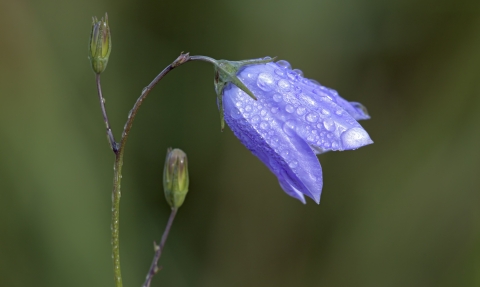
Wildlife advice
Got a wildlife question?
Find detailed answers to frequently asked wildlife questions below.
Injured wildlife
As a conservation organisation, Somerset Wildlife Trust cannot treat sick or injured wildlife. If you find an animal that is trapped or hurt, please contact Highbridge based wildlife rescue charity Secret World, or the RSPCA.
Finding a baby bird on the ground
In most instances we recommend leaving a baby bird alone if you find one on the ground. During spring you may find a baby bird on the ground that appears to have ‘fallen’ out of its nest. Find out how to work out if help is required and what to do below.
If the bird has feathers it is a fledgling. Unless it’s in immediate danger, do nothing...
Very few fledglings manage to fly on their first attempt and they will often spend several days on the ground. Whilst it may look like the bird is alone and in trouble, the parents are usually close by and will still be providing food.
If you find a fledgling that is in danger from a predator such as a cat is close to passing traffic, you can safely relocate it to a sheltered location such as a nearby hedge, but don't go to far! Touching a baby bird will not cause its parents to abandon it.
If the bird has no feathers...
If the baby bird is pink and featherless then it is still a nestling. If you can see it, return the bird to its nest. This will not cause the parents to reject it or abandon the nest.
If you can’t find the nest or the nestling is visibly injured, please contact your local wildlife rescue centre (see below)
As a conservation organisation, Somerset Wildlife Trust cannot treat sick or injured wildlife. If you find an animal that is trapped or hurt, please contact Highbridge based wildlife rescue charity Secret World, or the RSPCA.
Identifying a plant or animal
We are unable to come out to your home. If possible please email a photograph and description to enquiries@somersetwildlife.org
You can also get in touch via Facebook or Twitter
To submit a species record, please visit the Somerset Environmental Records Centre (SERC)
Wildlife gardening advice
Detailed wildlife gardening advice on everything from ponds to pests can be found in the wildlife gardening section of our website.
Moving frog & toad spawn
Detailed information about frog and toad spawn can be found on the Amphibian & Reptile Trust website.
Cutting back a bush or tree without harming wildlife
The cutting and pruning hedges should always take place outside of the main breeding period (between September and February). Nesting birds are fully protected by law and it can be a criminal offence if a nest is harmed.
Deterring pests without harming wildlife
Each garden is a miniature ecosystem. The creatures within it determine what thrives, survives, deteriorates or dies. By using the wildlife friendly pest control measures listed on our wildlife gardening pages you can achieve equilibrium in your outdoor space.
Carrying out an ecological survey
Somerset Wildlife Trust Ecology services carries out professional ecological services for local authorities, companies and individuals. Please visit our dedicated ecology services website below for further information.
What is Ash Dieback
First confirmed in the UK in 2012, ash dieback, also known as 'Chalara' or Chalara ash dieback, is a fatal disease of ash trees caused by a fungus called Hymenoscyphus fraxineus. The disease has spread across Europe and the UK.
Reporting & preventing wildfires
If you see an unattended or wild fire, please report it straight away. Don’t assume someone else has reported it.
- Don’t attempt to tackle fires that can’t be put out with a bucket of water
- Get to a safe place
- Note the location of the fire
- Call 999 and ask for the Fire & Rescue Service
- Give as much information as you can
